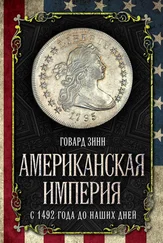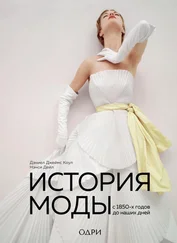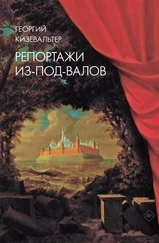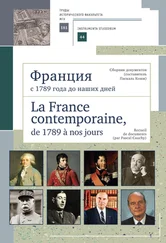Ibid. P. 28.
Rose J. The Case of Peter Pan, or The Impossibility of Children’s Fiction. Philadelphia: University of Pennsylvania Press, 1984. P. 1–2.
Brandow-Faller M. ‘An Artist in Every Child – A Child in Every Artist’. Artistic Toys and ‘Art for the Child’ at the Kunstschau 1908 // West 86 th: A Journal of Decorative Arts, Design History, and Material Culture. 2013. No. 2 (20). P. 195–222; Brandow-Faller M. Child’ s Play? Memory and Nostalgia in the Toys of the Wiener Werkstätte // Journal of Decorative and Propaganda Arts. 2015. No. 27. P. 148–171; Brandow-Faller M. Kinderkunst between Vienna and Brussels 1900: Child Art, Primitivism and Patronage, in Vienna Brussels 1900 / ed. by H. Mittelbauer, P. Defraeye. Leiden: Brill Academic Press, 2018.
См. важную монографию Эми Огаты: Ogata A. Designing the Creative Child: Places and Playthings in Midcentury America. Minneapolis: University of Minnesota Press, 2013. В ней говорится, что прогрессивные игрушки и культура дизайна сыграли важную роль в формировании культурных норм послевоенного культа творческого ребенка.
См.: Grant J. Raising Baby by the Book: The Education of American Mothers. New Haven: Yale University Press, 1998. P. 201–244.
В переводе с нем. «кукольная кухня».
Глиняная или литая шкатулка в виде или головы сидящего человека, или в виде целой сценки. Монетка падала в щель и приводила в действие механизм, отчего фигура смешно двигалась.
Barton C., Somerville K. Play Things: Children’s Racialized Mechanical Banks and Toys, 1880–1930 // International Journal of Historical Archaeology. 2012. No. 1 (16). P. 47–85; Barton C., Somerville K. Historical Racialized Toys in the United States. N. Y.: Routledge, 2016.
«Шани и ее друзья» – бренд, под которым выпускались Барби-афроамериканки.
Chin E. Ethnically Correct Dolls. P. 311–313.
duCille A. Dyes and Dolls. P. 56.
Edgeworth M., Edgeworth R. Practical Education. N. Y.: Self, Brown, 1801. Vol. II. P. 298.
Yallop H. Age and Identity in Eighteenth-Century England. L.: Routledge, 2016. P. 19.
Kowaleski-Wallace E. Consuming Subjects: Women, Shopping and Business in the Eighteenth Century. Chichester: Columbia University Press, 1997. P. 73–98; Smith K. Sensing Design and Workmanship: The Haptic Skills of Shoppers in Eighteenth-Century London // Journal of Design History. 2012. No. 25. P. 1–10.
O’Malley A. The Making of the Modern Child: Children’s Literature and Childhood in the Late Eighteenth Century. Abingdon: Routledge, 2011. P. 5; также см.: Glaser B. Gendering Childhoods: On the Discursive Formation of Young Females in the Eighteenth Century // Fashioning Childhood in the Eighteenth Century / ed. by A. Müller. L.: Ashgate, 2006. P. 189–198; Müller A. Framing Childhood in Eighteenth-Century English Periodicals and Prints, 1689–1789. L.: Ashgate, 2009; Smith K. The Government of Childhood: Discourse, Power and Subjectivity. Basingstoke: Palgrave Macmillan, 2014.
Locke J. Some Thoughts Concerning Education, 7 thedition. L.: A. and J. Churchill, 1712.
Nardo A. K. The Ludic Self in Seventeenth-Century English Literature. N. Y.: State University of New York Press, 1991. P. 11–12. Также см.: Addy J. Sin and Society in the Seventeenth Century. L.: Routledge, 1989.
О более позднем ребенке-потребителе см.: Seiter E. Sold Separately: Children and Parents in Consumer Culture. New Brunswick, NJ: Rutgers University Press, 1995; Cook D. The Commodification of Childhood: The Children’s Clothing Industry and the Rise of the Child Consumer. L.: Duke University Press, 2004; Jacobson L. Raising Consumers: Children and the American Mass Market in the Early Twentieth Century. N. Y.: Columbia University Press, 2005; Khan S. Harnessing the Complexity of Children’s Consumer Culture // Complicity: An International Journal of Complexity and Education. 2006. No. 1 (3). P. 39–59; Cross G. Kids’ Stuff: Toys and the Changing World of American Childhood. L.: Harvard University Press, 2009.
Plumb J. The New World of Children in Eighteenth-Century England // Past and Present. 1975. No. 67. P. 64–95; и The New World of Children in Eighteenth-Century England // The Birth of a Consumer Society: The Commercialization of Eighteenth-Century England / ed. by N. McKendrick, J. Brewer, J. Plumb. L.: Europa, 1982. P. 286–315.
См., например: Seiter E. Sold Separately. P. 51–95.
Connor R. Women, Accounting, and Narrative: Keeping Books in Eighteenth-Century England. L.: Routledge, 2011. P. 5.
Batchelor J. Fashion and Frugality: Eighteenth-Century Pocket Books for Women // Studies in Eighteenth-Century Culture. 2003. No. 32. P. 1–18.
Grenby M. The Child Reader, 1700–1840. Cambridge: Cambridge University Press, 2011. P. 2.
Townsend J. Written for Children. L.: Pelican, 1976. P. 31.
A Pretty Little Pocket Book, 10 thedition. L.: John Newbery, 1760.
The Important Pocket Book. L.: John Newbery, 1765. P. 1.
Wennerlind C. Casualties of Credit: The English Financial Revolution, 1620–1720. Cambridge, MA: Harvard University Press, 2011.
O’Malley A. The Making of the Modern Child. P. 104.
Locke J. The Works of John Locke, vol. 8. L.: Rivington, 1824. P. 199–201.
Michals T. Experiments before Breakfast: Toys, Education and Middle-Class Childhood // The Nineteenth-Century Child and Consumer Culture / ed. by D. Denisoff. Aldershot: Ashgate. 2008. P. 33.
Edgeworth M., Edgeworth R. Practical Education, II. P. 276.
Robbins S. Lessons for Children and Teaching Mothers: Mrs. Barbauld’ s Primer for the Textual Construction of Middle-Class Domestic Pedagogy // The Lion and the Unicorn. 1993. No. 17. P. 135–151.
Jackson M. Engines of Instruction, Mischief, and Magic: Children’s Literature in England from its Beginnings to 1839. Lincoln: University of Nebraska Press, 1989. P. 131.
Похожий довод приводится и в отношении ребенка-потребителя XXI века в: Jacobson L. Raising Consumers. P. 56–92.
Читать дальше





![Сергей Плохий - Потерянное царство. Поход за имперским идеалом и сотворение русской нации [c 1470 года до наших дней]](/books/433093/sergej-plohij-poteryannoe-carstvo-pohod-za-impersk-thumb.webp)






